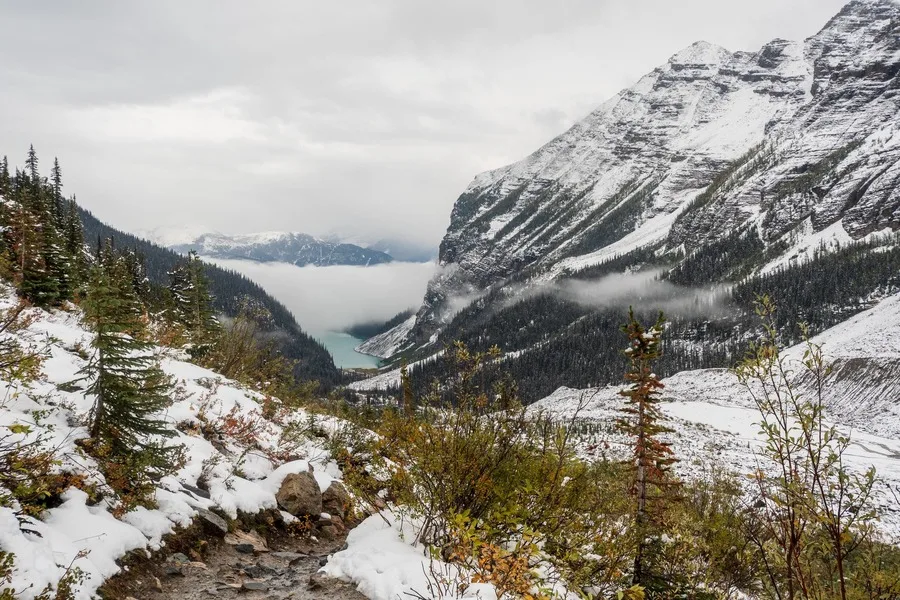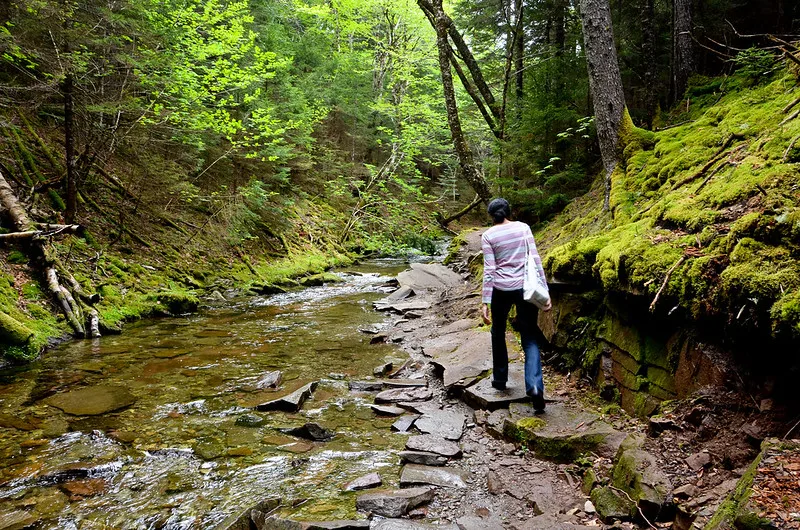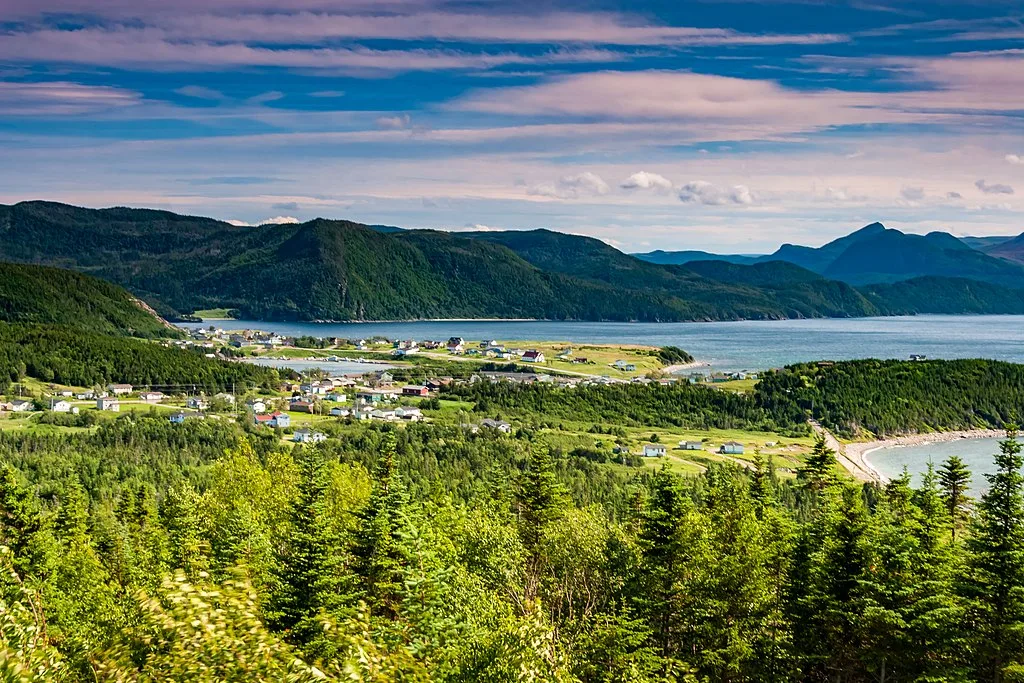Are you ready to explore some of the most breathtaking landscapes on Earth? Canada offers a wealth of hiking experiences that will leave you in awe. From majestic mountains and serene lakes to dramatic coastlines and lush forests, there is something for every hiker in this vast country. Dive into the natural beauty and diverse trails of Canada—your next adventure awaits!
Popular Hiking Destinations in Canada
Banff National Park
Banff National Park is in Alberta and is one of Canada’s most famous parks. It is part of the Canadian Rockies, known for its beautiful mountain views, clear blue lakes, and lots of wildlife. Popular hikes here include Lake Louise Lakeshore Trail, Plain of Six Glaciers, and Sulphur Mountain Trail. Lake Louise is known for its bright turquoise water, perfect for photos. The Plain of Six Glaciers hike leads to a historic tea house with stunning views. Sulphur Mountain Trail is a bit tough but offers amazing views from the top. Banff has something for every hiker, from beginners to experts.

Аuthor: Jason Wong – lookoutpoint.ca
Jasper National Park
Jasper National Park, also in Alberta, is the largest park in the Canadian Rockies. It has rugged mountains, beautiful valleys, and lots of wildlife, like elk, deer, and bears. Some great hikes in Jasper include the Valley of the Five Lakes, Maligne Canyon, and Edith Cavell Meadows. The Valley of the Five Lakes is an easy hike with five clear lakes along the way. Maligne Canyon is a deep canyon with waterfalls and unique rock formations. Edith Cavell Meadows offers a challenging hike with views of glaciers and wildflowers. Jasper is a paradise for nature lovers and adventurers.
Pacific Rim National Park Reserve
Pacific Rim National Park Reserve is on Vancouver Island’s west coast in British Columbia. It’s known for its rugged coastline, rainforests, and long beaches. The most famous trail here is the West Coast Trail, a tough 75-kilometer hike that takes about a week. It offers beautiful coastal views, waterfalls, and wildlife like sea lions and whales. For shorter hikes, try the Schooner Cove Trail or the Nuu-chah-nulth Trail. Schooner Cove Trail goes through a rainforest to a lovely beach. The Nuu-chah-nulth Trail offers insights into the history of the First Nations people. Pacific Rim is great for those who love the ocean and wilderness.
Gros Morne National Park
Gros Morne National Park is in Newfoundland and Labrador and is a UNESCO World Heritage Site. It is known for its unique geology and stunning landscapes, including cliffs, fjords, and forests. Top hikes include Gros Morne Mountain Trail, Green Gardens Trail, and Tablelands Trail. Gros Morne Mountain Trail is a challenging hike that leads to the mountain’s summit with incredible views. Green Gardens Trail offers coastal views with sea stacks and meadows. Tablelands Trail lets you walk on the Earth’s mantle, which was pushed up from the ocean millions of years ago. Gros Morne is a must-visit for geology enthusiasts and nature lovers.
Fundy National Park
Fundy National Park is in New Brunswick and is famous for having the world’s highest tides. The park features lush forests, beautiful waterfalls, and a rugged coastline. Popular hikes include Dickson Falls Trail, Fundy Footpath, and Matthews Head Trail. Dickson Falls Trail is an easy walk to a pretty waterfall. Fundy Footpath is a tough multi-day hike along the coast with stunning views of the Bay of Fundy and wildlife like moose and bald eagles. Matthews Head Trail offers a moderate hike with coastal views and old homestead remains. Fundy National Park is perfect for exploring coastal landscapes and experiencing the power of the tides.

Author : sk – flickr.com
Essential Tips for Hiking in Canada
Be Ready for the Weather
Canada’s weather can be unpredictable, especially in the mountains and forests. Always check the weather forecast before your hike and be prepared for rain, wind, or even snow. Dress in layers so you can adjust to changes in temperature. Start with a base layer that keeps sweat away, add an insulating layer for warmth, and finish with a waterproof and windproof jacket. Don’t forget a hat and gloves, as it can get cold, especially at higher elevations.
Stay Safe Around Wildlife
Canada is home to many wild animals like bears, moose, and deer. Seeing wildlife can be exciting, but safety is important. Always keep a safe distance and never approach or feed wild animals. If you encounter a bear, stay calm and slowly back away. Make yourself look bigger and speak firmly. Carry bear spray, especially in bear-prone areas, and make noise while hiking to avoid surprising animals. This helps reduce the chance of close encounters.
Essential Gear and Equipment
Having the right gear makes your hike safer and more enjoyable. Here are some essentials to bring:
- Hiking Boots: Wear sturdy boots with good ankle support and traction. Break them in before your hike to avoid blisters.
- Backpack: Use a comfortable backpack to carry your gear. Ensure it has enough space for all essentials.
- Navigation Tools: Bring a map and compass, and know how to use them. A GPS device or hiking app is helpful, but don’t rely solely on electronics as they can fail.
- Water: Carry plenty of water. A hydration pack or water bottles work well. If refilling from natural sources, bring a water filter or purification tablets.
- Food: Pack enough food, including high-energy snacks like nuts, dried fruit, and energy bars. For longer hikes, bring easy-to-prepare meals.
- First Aid Kit: Include bandages, antiseptic wipes, pain relievers, and any personal medications.
- Clothing: Pack extra clothing, including socks and a hat. Weather can change quickly, so be prepared.
- Sun Protection: Wear sunscreen, sunglasses, and a hat to protect against the sun.
- Emergency Shelter: Bring a lightweight emergency blanket or bivy sack for protection in case of an emergency.
Know Your Trail Markers and Maps
Knowing how to read trail markers and maps is key to staying on the right path. Trail markers can be painted blazes, signs, cairns (rock piles), or flagging tape. Learn the markers used on your trail before starting. Always carry a detailed map of the area. Topographic maps are useful as they show elevation and natural features. Learn to read a map and use a compass. GPS devices and smartphone apps are helpful, but don’t rely solely on them.
If hiking in a group, ensure everyone knows the route and plan. Stick to established trails to minimize environmental impact and reduce the risk of getting lost. Pay attention to trail signs and junctions. If uncertain about your direction, stop and check your map and compass. Taking a moment to reorient yourself is better than risking getting lost.
Experiences on Canadian Trails
Wildlife Encounters
Hiking in Canada offers a special chance to see a variety of wildlife. From small animals like squirrels and birds to larger ones like moose and bears, Canada’s trails bring you close to nature. In the forests, you might spot deer grazing or hear the distant call of a loon. By rivers and lakes, you can see beavers building their dams.
In parks like Jasper and Banff, you might even see more elusive animals like wolves and cougars. Coastal areas, such as those in Pacific Rim National Park Reserve, offer views of marine wildlife like seals, otters, and even whales. Remember to always keep a safe distance and never feed the animals. Watching them in their natural habitat is an unforgettable experience.
Scenic Vistas and Photo Opportunities
Canada’s trails offer some of the most stunning views you’ll ever see. Whether you’re hiking in the mountains, forests, or along the coast, there’s always a beautiful sight waiting around the corner. The Rocky Mountains provide breathtaking vistas of snow-capped peaks and turquoise lakes. Places like Banff and Jasper are famous for their picture-perfect landscapes.
Forests, especially in the fall, offer a dazzling display of colors with their changing leaves. Coastal trails give you panoramic views of the ocean, with waves crashing against rugged cliffs. Sunset and sunrise are particularly magical times, casting a golden glow over the scenery. Don’t forget your camera or smartphone to capture these moments. These photos will be cherished memories of your hiking trips in Canada.
Cultural and Historical Sites Along the Trails
Many of Canada’s hiking trails are rich with cultural and historical significance. While hiking, you might come across ancient Indigenous sites, old settlements, or historical landmarks. These sites tell the story of Canada’s past and its diverse cultural heritage.
In places like Gros Morne National Park, you can see geological features that are billions of years old, offering a glimpse into Earth’s history. Trails in national parks often have informative signs that explain the history and significance of the area. For example, in Fundy National Park, you can learn about the history of local Indigenous peoples and early European settlers.
Exploring these sites adds depth to your hiking experience. It’s not just about the natural beauty but also understanding the stories and history that shape the land. Take your time to read the signs, visit interpretive centers, and appreciate the cultural heritage these trails offer.

Аuthor : Michel Rathwell – wikimedia.org
Connecting with Nature
One of the most unique experiences of hiking in Canada is the deep connection with nature. The serene environment, the sound of birds chirping, and the rustle of leaves in the wind create a peaceful ambiance. Being in nature helps reduce stress and boosts your mood. It’s a perfect way to disconnect from daily life and find inner peace.
Whether hiking alone or with friends, the time spent on the trail allows for reflection and mindfulness. It’s a chance to breathe in the fresh air, feel the earth beneath your feet, and truly appreciate the beauty of the natural world. Every hike becomes a journey not just through the landscape but also within yourself.
Adventure and Challenge
Hiking in Canada can also be an adventure filled with challenges that test your limits and build your skills. From steep mountain trails to long coastal paths, there are hikes that push you physically and mentally. Completing a challenging hike brings a sense of achievement and boosts your confidence.
For those who seek adventure, multi-day hikes offer an opportunity to camp under the stars and immerse yourself fully in the wilderness. These hikes require planning, endurance, and determination. The rewards, however, are immense – stunning views, solitude, and a deep connection with the natural world.
Seasonal Delights
Canada’s trails offer unique experiences in every season. In spring, the trails come alive with blooming wildflowers and fresh green leaves. Summer is perfect for long hikes with extended daylight hours and warm weather. Fall brings a spectacular display of colors as the leaves change, creating picturesque landscapes. Winter transforms the trails into a snowy wonderland, offering opportunities for snowshoeing and winter hiking.
Each season brings its own charm and challenges, making hiking in Canada a year-round adventure. Preparing for the specific conditions of each season ensures a safe and enjoyable experience.
Conclusion
Canada offers diverse hiking experiences with majestic mountains, serene lakes, and dramatic coastlines. Top destinations include Banff, Jasper, Pacific Rim, Gros Morne, and Fundy National Parks. Be prepared for unpredictable weather by dressing in layers and carrying essential gear. Stay safe by maintaining a distance from wildlife and knowing how to use trail markers and maps. Enjoy unique experiences like wildlife encounters, scenic vistas, and exploring cultural and historical sites.
FAQs
What are the best times of year to hike in Canada?
The best times to hike in Canada are late spring to early fall (May to October). This period offers the most favorable weather conditions and accessible trails. However, each season provides unique experiences, from blooming wildflowers in spring to vibrant fall foliage.
Do I need a permit to hike in Canadian national parks?
Many Canadian national parks require permits for backcountry camping and some specific trails. Day hikes usually do not require permits, but it’s always best to check the specific regulations of the park you plan to visit.
How can I stay safe from wildlife while hiking?
To stay safe from wildlife, keep a respectful distance, avoid feeding animals, and make noise to avoid surprising them. Carry bear spray in areas known for bear activity and know how to use it. Always check for park-specific guidelines on wildlife safety.
What should I pack for a hike in Canada?
Pack essential items such as sturdy hiking boots, a comfortable backpack, navigation tools (map and compass), plenty of water, high-energy snacks, a first aid kit, extra clothing layers, sun protection, and an emergency shelter. Adjust your gear based on the length and difficulty of your hike.
Are there guided hiking tours available in Canadian national parks?
Yes, many Canadian national parks offer guided hiking tours led by experienced guides. These tours can enhance your hiking experience by providing valuable insights into the natural and cultural history of the area.
Can I hike with my dog in Canadian national parks?
Pets are allowed in many Canadian national parks, but they must be kept on a leash at all times. Some trails may have specific restrictions, so it’s important to check the park’s regulations regarding pets before your hike.